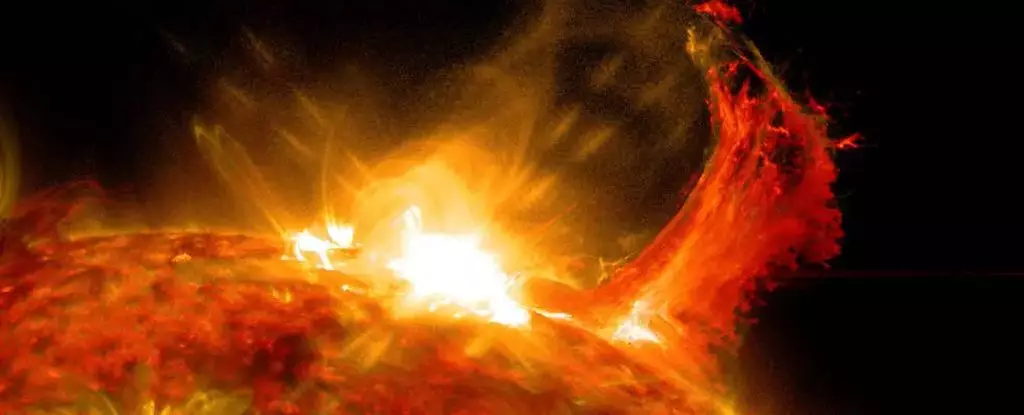At a glance, the Sun appears as an unchanging fixture in our sky, providing light and warmth to the Earth below. However, the reality is far more complex. The Sun is not a solid body but rather a chaotic, ever-evolving sphere of plasma—ionized gas held together by gravitational and electromagnetic forces. Its surface is in constant motion, shaped by fluctuating magnetic fields that drive various solar phenomena. This behavior creates challenges for solar physicists who strive to predict the Sun’s activities, particularly those that can have significant repercussions on our technology-dependent society.
One of the most compelling yet unpredictable events associated with the Sun’s activity is the coronal mass ejection (CME). These colossal explosions release vast amounts of plasma into space and can pose threats to satellites, power grids, and communications on Earth. Their unpredictable nature has historically hampered our ability to forecast their occurrence and potential impact. Recent advancements in artificial intelligence (AI) and machine learning offer promising tools to tackle this challenge, transforming our approach to solar forecasting.
CMEs occur when the Sun’s magnetic field lines realign, releasing enormous energy in the form of plasma ejections that can reach Earth in a matter of days. These events vary widely in intensity, and their effects on Earth can range from minor to catastrophic. For instance, intense CMEs can trigger geomagnetic storms that disrupt GPS signals, power grids, and telecommunications infrastructure. The intersection of science and technology becomes critical here, particularly when we consider that accurate forecasts can mitigate the potential damage caused by these solar storms.
Recent studies have highlighted the potential of machine learning algorithms to improve our predictive capabilities regarding solar activity. By analyzing historical data on solar phenomena, these algorithms can identify patterns and correlations that human analysts might overlook. This capability is particularly relevant for forecasting the effects of solar flares and associated CMEs, as evidenced by research from a team led by Sabrina Guastavino at the University of Genoa.
In their groundbreaking work, Guastavino and her colleagues applied machine learning techniques to analyze data from previous solar activities, culminating in the prediction of significant solar events linked to the May 2024 storm. Notably, their algorithms acknowledged a marked increase in activity from the region known as AR13664, which ultimately produced a powerful X8.7 class flare. By leveraging vast datasets and applying complex models, the researchers aimed to anticipate the timing and impact of solar flares and CMEs.
The application of AI in this context has paved the way for unprecedented accuracy in predictions—a substantial leap from traditional forecasting methods. The researchers found that their machine learning models not only predicted the occurrence and timing of CMEs with impressive precision but also reduced uncertainties that have historically plagued solar forecasting.
The implications of improved solar predictions are far-reaching. For our technologically driven society, the ability to anticipate CMEs and their potential geomagnetic storms becomes a matter of national security and economic stability. With enhanced forecasting capabilities, power grid operators and telecommunications companies can implement preventative measures, protecting infrastructure and minimizing disruption.
Moreover, for stargazers and enthusiasts of natural phenomena, the advanced predictive capabilities may lead to better forecasts of auroral displays, allowing for more opportunities to witness the awe-inspiring northern and southern lights. The intersection of machine learning and solar physics not only enhances our scientific understanding but also enriches our experience of the natural world.
As we look to the skies, it becomes increasingly important to expand our understanding of the Sun and its influence on our planet. The integration of machine learning into solar physics represents a significant stride toward harnessing the Sun’s unpredictable fury for the benefit of mankind. This innovative approach not only aids in safeguarding our technological infrastructure from solar storms but also enhances our appreciation for the magnificent celestial body that governs our existence. The future, illuminated by both the Sun and technology, holds much promise for both scientists and skywatchers alike.


Leave a Reply